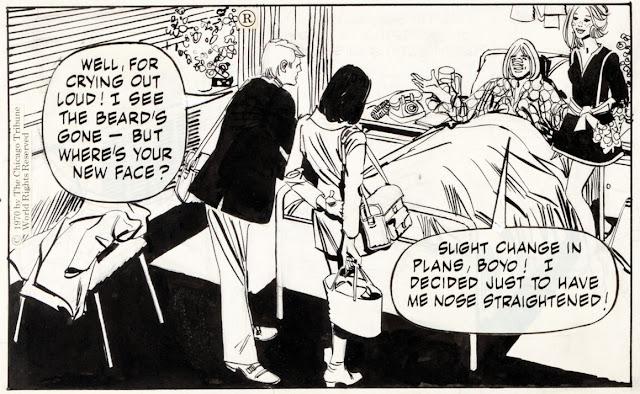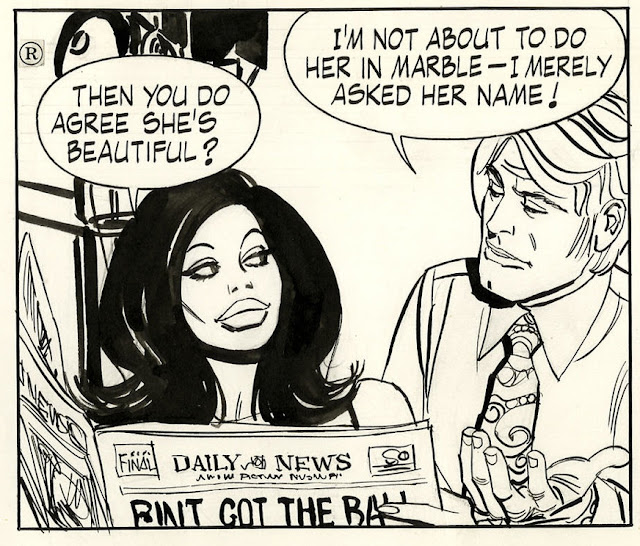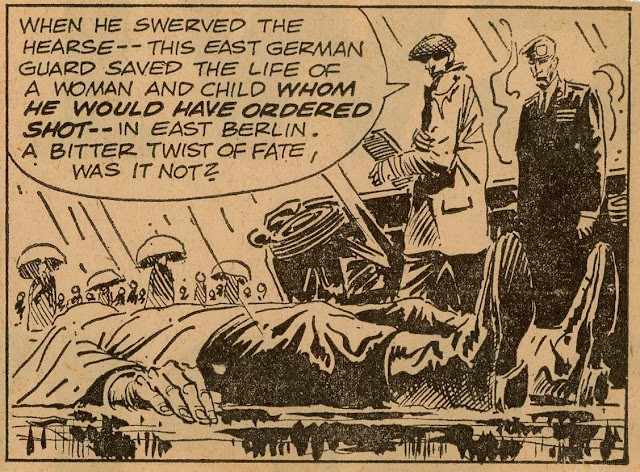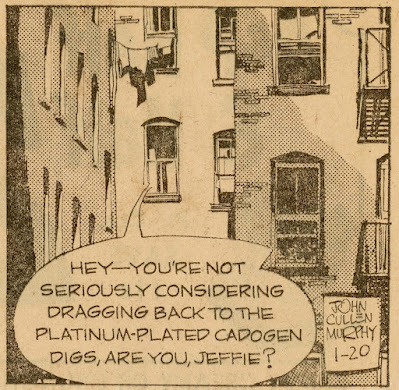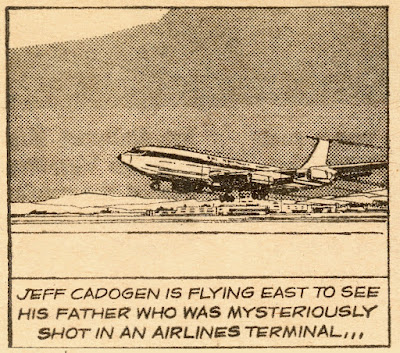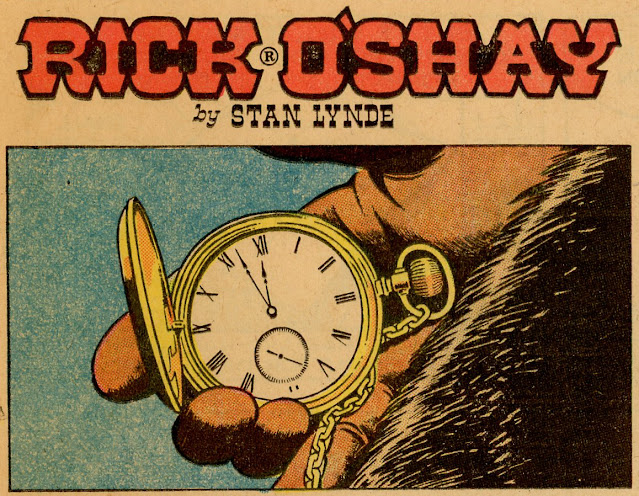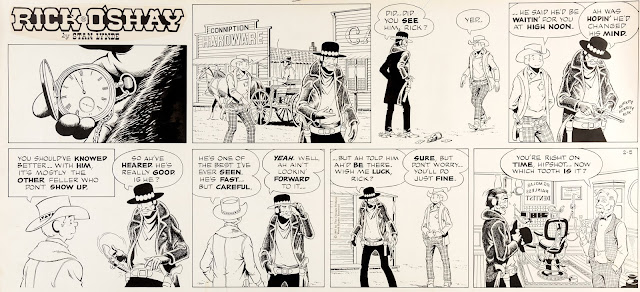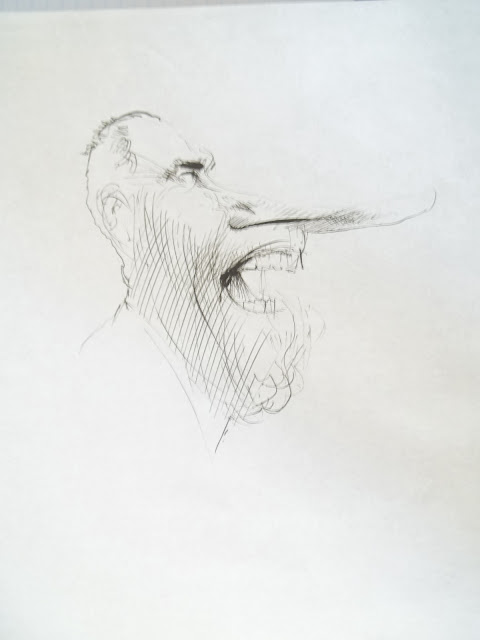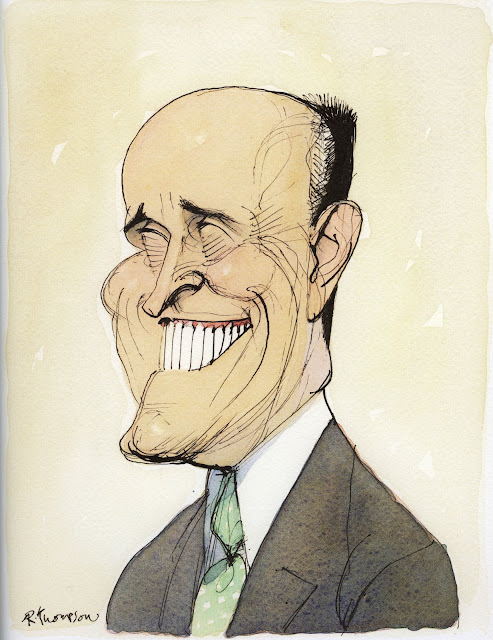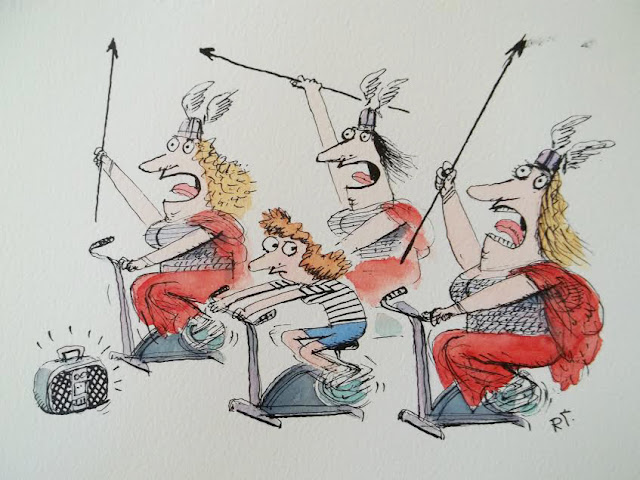In the 1950s newspapers began reducing the size of comic strips. By the 1960s and 70s, artists found themselves tossing out backgrounds and details, simplifying images and shortening their messages to fit within the new compact formats. One good way to look at the impact on the quality of the strips is to consider the western comic strip Rick O'Shay (1958-1977).
Montana artist Stan Lynde was often at his best rhapsodizing about the wide open spaces he loved.
 |
| Detail |

Strips today no longer have the space to portray epic landscapes, but then again they rarely address epic content.
The diminished size of today's strips doesn't just restrict geography. It also affects the pacing and staging of an entire strip.
For example, in the following Rick O' Shay episode, a young boy was all excited about going on his first deer hunt in the mountains with two hunters he idolized. Lynde had enough panels to set the stage with stark, black and white drawings which stood out on a color Sunday page. We only begin to see color for the first time in the third panel, as the weary hunters returns home.
There's a lot of humanity in this strip... the concern of the mother, the tenderness of the adult hunters, all well laid out by Lynde. But this kind of big-hearted content takes room, and today's strips don't have the panels or the emotional space for such stories.
In this next strip, see how Lynde uses his 8 panels to show the passage of time. He sets up this strip like the movie, High Noon, to build suspense with a surprise at the end.
You won't see strips staged like this today. Jim Davis, who heads the Garfield corporate empire, understands how to succeed in today's diminished format. Davis says that he tries to limit his strips to fewer than 25 words, and to get to the punchline in fewer than ten seconds. He says that if readers linger over his strip longer than ten seconds, they might predict the punchline ahead of him.
There are still more ways in which comic strips have been pinched by today's restrictions. For many years, Lynde featured Native American characters in his strip. His Native American friends in Montana enjoyed the characters and never complained.
However, toward the end of the strip a lawyer in Los Angeles complained about the use of Native American characters, causing Lynde to greatly reduce their role.
Every once in a while, Lynde was known to bring religion into his strip-- something that would be unfashionable now.
Strips have shrunk not just in physical dimensions but in other ways that go to the heart of their artistic contribution.





